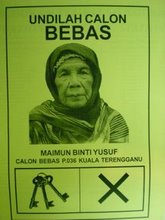 Today we (the academic staffs of the School of the Arts) were asked to attend a workshop to teach us on how to work or design an effective presentation. This class is organised by Mr. Zaid Alsagoff from International of Medical University Malaysia. He shows us the latest tools that I found fascinating.
Today we (the academic staffs of the School of the Arts) were asked to attend a workshop to teach us on how to work or design an effective presentation. This class is organised by Mr. Zaid Alsagoff from International of Medical University Malaysia. He shows us the latest tools that I found fascinating.
Here I would like to extend Mr. Zaid talk and sharing session about the useful links if you want your presentation to be much more interesting and as they said, create an awesomeness of your presentation.
Useful links:
VideoScribe – http://bit.ly/YXTWvC
Bitly – to shorten your long links to a shorter version
This site is fantastic as it help to shorten an image links that you got from internet to be less messy and shorten it or simplify it.
Try this one and it makes your life
https://bitly.com/shorten/
Padlet – http://www.polleverywhere.com/
Poll Everywhere – http://www.polleverywhere.com/
is a superb tools for a fast response, to get the students to response to a certain topic for the open discussion.
Socrative is a fast tools to do quiz, or forum in the class. This is a great tools for the class exercise and to engage the students to the topic that you want to get the student thinking.
-http://b.socrative.com/
Useful links:
VideoScribe – http://bit.ly/YXTWvC
Bitly – to shorten your long links to a shorter version
This site is fantastic as it help to shorten an image links that you got from internet to be less messy and shorten it or simplify it.
Try this one and it makes your life
https://bitly.com/shorten/
Padlet – http://www.polleverywhere.com/
Poll Everywhere – http://www.polleverywhere.com/
is a superb tools for a fast response,
to get the students to response to a certain topic for the open discussion.
Socrative is a fast tools to do quiz, or forum in the class. This is a great tools for the class exercise and to engage the students to the topic that you want to get the student thinking.
-http://b.socrative.com/
Visual and seduction. Another interesting video to sharpen your understanding of the use of visual construction and how it can influence our way of doing and living in everyday life.
This video is done by the beauty product company by LANEIGE U.S. Besides selling the product, Laneige touch a bit on the idea of seduction and beauty. I also like the way the images and the videos been carefully constructed here. So here it is a video worth to be shared, not for the selling of the product or for the sake of the advertising but for the love of design. Funny, as much as it is a seductive video and I can see that it will be selling well the product, after the understanding the idea of construction and deconstruction, examining it and breaking it layers by layers, the video is now less seductive for me.














